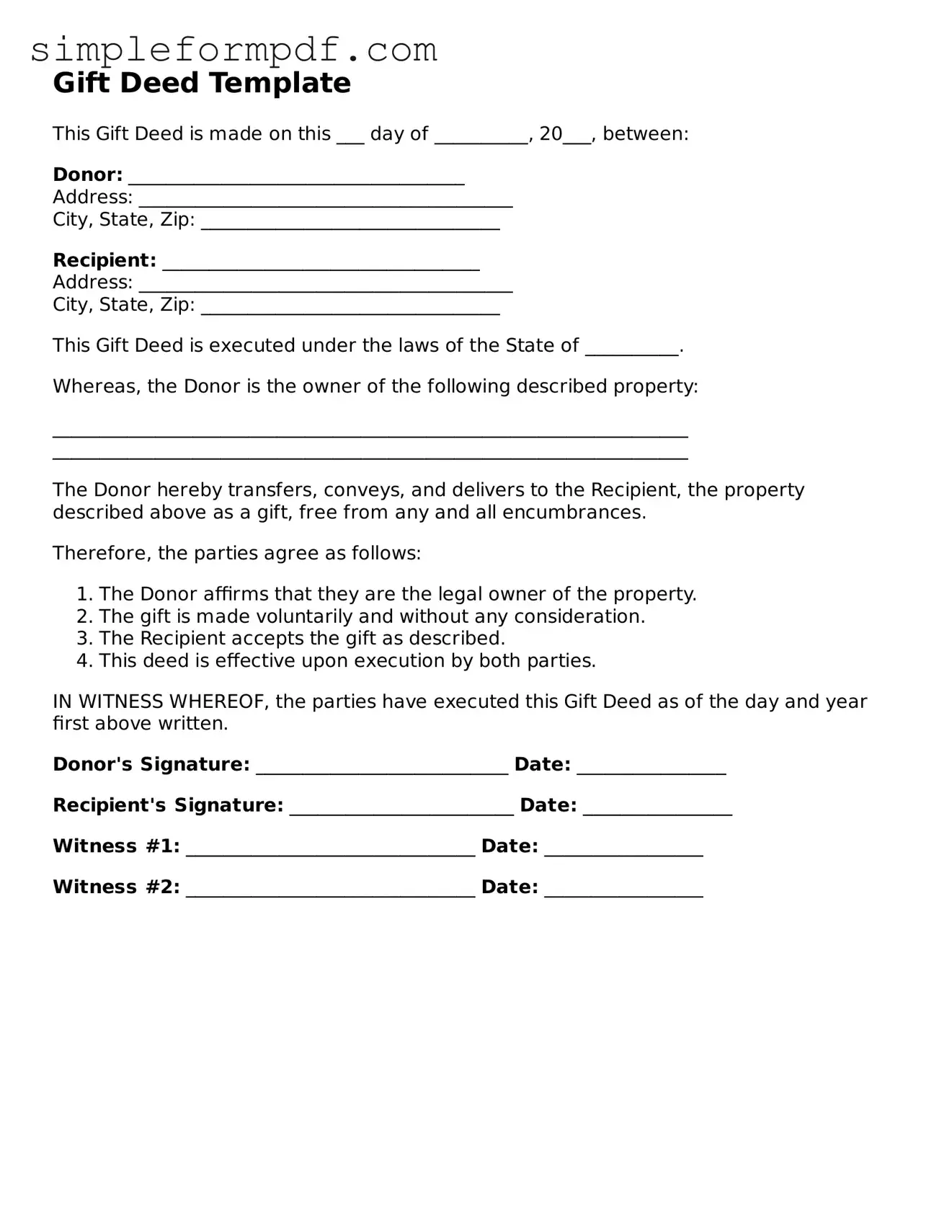Gift Deed Template
This Gift Deed is made on this ___ day of __________, 20___, between:
Donor: ____________________________________
Address: ________________________________________
City, State, Zip: ________________________________
Recipient: __________________________________
Address: ________________________________________
City, State, Zip: ________________________________
This Gift Deed is executed under the laws of the State of __________.
Whereas, the Donor is the owner of the following described property:
____________________________________________________________________
____________________________________________________________________
The Donor hereby transfers, conveys, and delivers to the Recipient, the property described above as a gift, free from any and all encumbrances.
Therefore, the parties agree as follows:
- The Donor affirms that they are the legal owner of the property.
- The gift is made voluntarily and without any consideration.
- The Recipient accepts the gift as described.
- This deed is effective upon execution by both parties.
IN WITNESS WHEREOF, the parties have executed this Gift Deed as of the day and year first above written.
Donor's Signature: ___________________________ Date: ________________
Recipient's Signature: ________________________ Date: ________________
Witness #1: _______________________________ Date: _________________
Witness #2: _______________________________ Date: _________________
